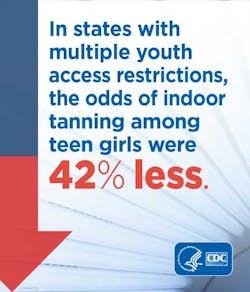A rising number of food products have added caffeine, including waffles, jelly beans, gum and nuts. How these items effect children and adolescents is something the FDA intends to study. The FDA announcement came just as Wrigley's (a subsidiary of Mars) promoted a new pack of gum with eight pieces, each containing as much caffeine as half a cup of coffee.(3) Wrigley decided to stop production, sales and marketing of its new caffeinated gum in May 2013. The company's decision followed meetings with the FDA to discuss the government agency's concerns about the effect the gum has on children and adolescents.(4) In children ages 2 to 5, tea surpassed soda as the largest contributor to caffeine intake.(1) Tea was the second largest contributor to overall caffeine intake for all ages and remained relatively stable over the decade. In 19- to 22-year-olds, coffee intake was greater than soft drinks as the primary source of caffeine, growing from 14% of intake to 34%.(1) Energy drinks went from 0% in 1999-2000 to 10%. Another way we need to protect our children is to teach them healthy lifestyle habits, from nutrition, exercise, no drug use, etc. Pediatric obesity is currently an epidemic, with the prevalence having quadruped over the last 25 years.(5) For children who are obese, a simple fall may lead to more serious elbow injuries and greater complications after surgery than children of a normal weight.(5) These include nerve palsy post-surgery. This is the first study to assess the implications of obesity on this type of a fracture and it substantiates the public health efforts in battling childhood obesity.
The numbers of states implementing new laws regarding indoor tanning have increased substantially in recent years. At this time, six states (California, Illinois, Nevada, Oregon, Texas, and Vermont), restrict indoor tanning among minors aged younger than 18 years.(7)
The World Health Organization (WHO) recommends that no one under the age of 18 years use indoor tanning. The FDA has proposed reclassifying indoor tanning devices from low- to moderate-risk devices. The proposed order advises against the use of indoor tanning among minors aged younger than 18 years.
For information about CDC’s efforts in skin cancer prevention, visit the website.(8)
References
1. Branum AM, Rossen LM and Schoendorf KC. Trends in Caffeine Intake Among US Children and Adolescents. Pediatrics 2014;133:386–393. http://pediatrics.aappublications.org/content/early/2014/02/04/peds.2013-2877.full.pdf.
2. FDA. Medicines in my Home: Caffeine and Your Body. http://www.fda.gov/downloads/drugs/resourcesforyou/consumers/buyingusingmedicinesafely/understandingover-the-countermedicines/ucm205286.pdf.
3. http://www.fda.gov/forconsumers/consumerupdates/ucm350570.htm.
4. http://www.cnn.com/2013/05/08/health/wrigley-caffeine-gum-production/.
5. Mark A. Seeley, Joel J. Gagnier, Ramesh C. Srinivasan, Robert N. Hensinger, Kelly L. VanderHave, Frances A. Farley, Michelle S. Caird. Obesity and Its Effects on Pediatric Supracondylar Humeral Fractures. The Journal of Bone and Joint Surgery(American), 2014; 96 (3): e18 DOI: 10.2106/JBJS.L.01643.
6. Gery P. Guy Jr, Zahava Berkowitz, Sherry Everett Jones, Emily O’Malley Olsen, Justin N. Miyamoto, Shannon L. Michael, and Mona Saraiya. (2014). State Indoor Tanning Laws and Adolescent Indoor Tanning. American Journal of Public Health. e-View Ahead of Print. doi: 10.2105/AJPH.2013.301850.
7. http://www.cdc.gov/media/releases/2014/p0213-indoor-tanning.html.
8. http://www.cdc.gov/cancer/skin.










